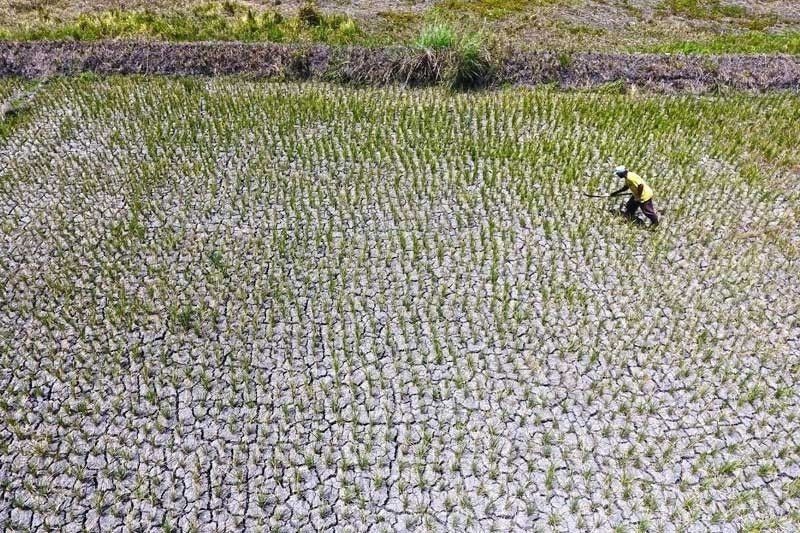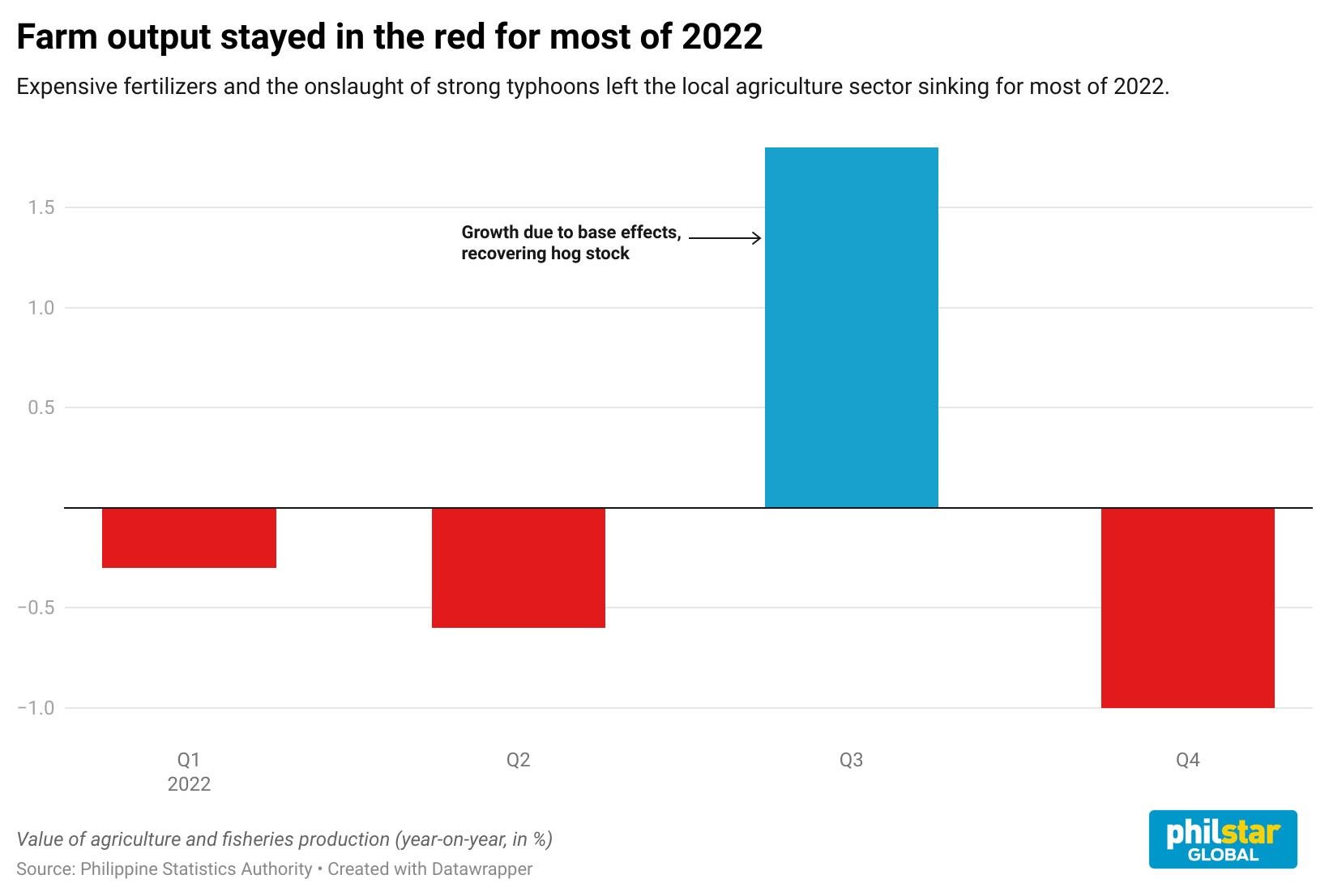Farm output contracts in 2022 on typhoons, expensive fertilizer

MANILA, Philippines — Farm output contracted again in 2022 after a battery of typhoons and skyrocketing fertilizer prices weighed on production, adding upward pressure on food prices for the entire year.
At constant 2018 prices, the value of agriculture and fisheries production skidded 0.1% year-on-year in 2022, albeit milder compared to the 1.7% contraction recorded in 2021, the Philippine Statistics Authority reported Wednesday.
In the final quarter of 2022, data showed farm output shrank 1% year-on-year.
Historically, agriculture accounts for 10% of the country’s gross domestic product and employs about a quarter of Filipino workers. But despite its important role to the economy, the farm sector has been left behind by other industries while agriculture workers live in abject poverty.
President Ferdinand “Bongbong” Marcos Jr., who has taken the agriculture portfolio, is hoping that the sector would finally perform and contribute to economic growth. His economic managers are banking on agriculture to grow “by about 2-3%”, an ambition that, analysts said, might not be feasible for the government as strong typhoons smash the country every year while the Russia-Ukraine war pushes up the prices of fertilizers.

“Aside from Typhoons Karding and Paeng (end Sep and Oct-Nov recently), higher prizes of fertilizers around August 2022 due to the Ukriane war, discouraged farmers from planting more. Hence, output during the harvest season was limited,” Domini Velasquez, chief economist at China Banking Corp., said in a Viber message.
Broken down, crop production, which accounted for more than half of total farm output, collapsed 1% on-year in the fourth quarter. The production of palay (unhusked rice) and corn contracted at annualized rates of 2.5% and 6.9%, respectively, as farmers reeled from the impact of typhoons in the previous quarter.
The fisheries subsector plunged 6.6% year-on-year in the fourth quarter. Double-digit contractions were recorded for the following species: bigeye tuna (tambakol/bariles),mudcrab (alimango), cavalla (talakitok), threadfin bream (bisugo), Indian mackerel (alumahan), grouper (lapu-lapu), Bali sardinella (tamban), tilapia, and tiger prawn (sugpo).
Supply shortages has pushed commodity prices to skyrocket in 2022. The prices of Filipino kitchen staples, such as onions and sugar, have continuously strained consumers’ budgets in past months.
Beyond sugar and onion, Velasquez pointed out improving livestock production should push pork stocks closer to pre-African swine fever levels. Latest PSA data showed livestock production grew 2.5% year-on-year in the fourth quarter. Hog output led the gainers by improving 3.4% on-year.
Poultry production, meanwhile, rose 1.8% on an annual basis in the fourth quarter, with all commodities recording improvements.
“Support for the agriculture sector such as providing seeds, fertilizers, improving cold chain facilities (as President Marcos suggested), should help alleviate higher food prices in the coming months,” Velasquez added.
The government will release the fourth quarter and full-year 2022 GDP data on Thursday, January 26.
- Latest
- Trending

































